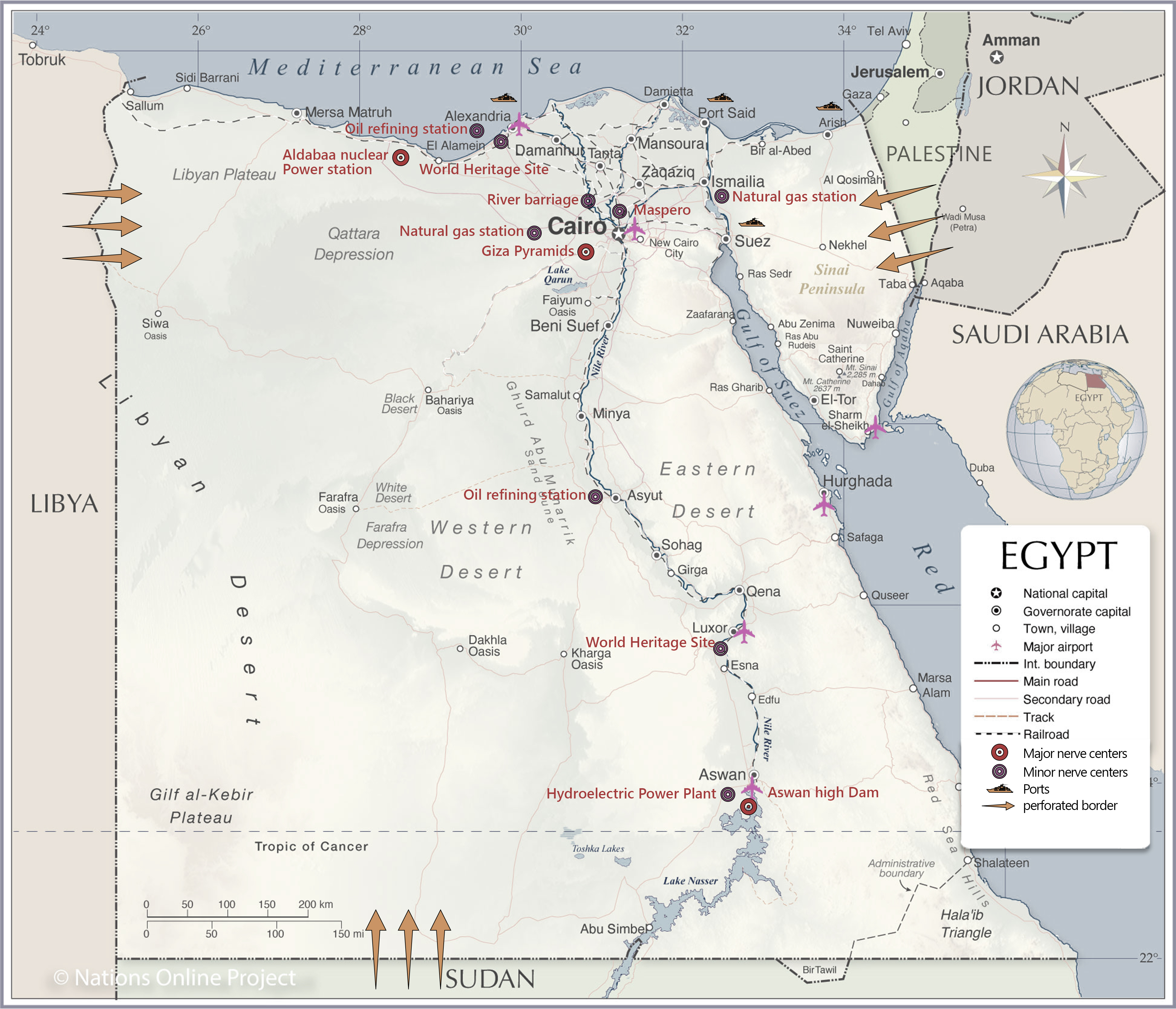By Prof. Dr. Mohsen Zahran
6th October 2021
In this world of challenges and confrontations we are facing multilevel trials and crises that seem often overwhelming and insurmountable, leading to difficult situations, unbelievable consequences, and demanding commitments politically, economically, socially, and environmentally. These crises are the results of many factors and causes; whether natural, man>made, or both.
The natural causes are multitudinal, ranging from earthquakes, volcano eruptions, hurricanes, tornadoes, cyclones, floods, flash floods, fires, tsunamis, tidal and heatwaves, snowstorms, drenching rainfalls, sand storms, thunder and lightning storms, rising water levels, and collapse of great dams and barrages.
While the man>made causes would include wars, invasions, insurgencies, revolts terrorism, explosions, Industrial accidents, plane and train crashes, boat accidents, system failures, disasters in utilities and transport networks. These are further multiplied by major problems at, nerve centers, blackouts, and civil disobedience, the collapse of law and order frameworks, power failures, breakdown of energy, cultural and legal order, pandemics, food shortages, water supply insufficiency, absence of leadership, and governance, as well as the breakdown of health, education, and welfare. These are usually coupled with systematic failures of ethical and moral references and the absence of chains of command, thus creating vacuums of disintegration of social, cultural, and legal frameworks.
By and large, the failure to manage and control crises of whatever magnitude is due to irresponsibility, lack of preparedness, absence of early warning systems, and lack of experience or expertise, lack of trained human resources, and shortage of material resources. These are further magnified by hasty reactions, absence of decision-making and know-how implementing machinery, in addition to the absence of timely response, lack of capabilities, delay in interventions, absence of monitoring mechanism, failure of communication channels, absence of crisis management systems, and shortage of expertise.
Needless to say, many of the bottlenecks and subsequent crises are often triggered by a lack, or deficiency, of comprehensive environmental planning. This is crucial in the current state of affairs. Invariably. It has been amply proven that the situation is further exasperated because of inexperienced leadership that ignores model making systems, machinery, and operations, as well as neglect of role-playing and hierarchy that ignore necessary evaluations and plans for action which need to be tested and applied periodically for a specified time schedule, in order to confront the occurrence of any crisis or emergency. This is the proper approach to deal with crisis management effectively, timely, and appropriately.
Emergency and Crisis Management Strategy
The proper intervention in order to confront and deal with any crisis on time with total preparedness bolstered with all the means and ways to confront the situation is multifold requiring efficient physical planning, objective evaluation, and comprehensive mobilization, in addition to the mustering of resources, assets, and means, before, during and after the crisis.
The modus operendi for crisis management includes beforehand the following:
1- Survey of possible problems, nerve centers, conflict nodes, and difficulties as well as systems of control and operations and, coupled with systems of handling and confrontations.
2- Monitoring of available natural and human resources at all levels in all sections, whether public or private, or governmental.
This includes financial, operational, technical, legal, and administrative resources, capabilities, potentialities as well as regional and international resources.
3- Establishment of action mechanisms at all levels; central, governorate, and local levels, coupled with effective communication channels. Needed also is the definition of duties, responsibilities, training, manuals and periodic testing of duties, drills, and timely response, as well as monitoring of quality performance on a periodic basis, and approval of updated manuals of operations and evaluation of performance periodically is mandatory. Verification and periodic implementation of operations in various locations, seasons, and levels with proper evaluation of performance and results must be given high priority.
4- Assurance of effective cooperation with countries of comparable situations to exchange experiences and capabilities must be ascertained.
5- Drawing of plans of actions that are tested, implemented, and upgraded for proactive response in confronting any crisis must be guaranteed and verified periodically.
6- It is essential to perform testing of all systems and hardware periodically to ensure proper functioning. This must be supported by the enactment and appropriation of adequate budgets for all required tasks, tests, and training. In addition to insurance of updated education and know-how.

A Modified Egypt Map showing the nerve centers of Egypt, the original map source: Nations Online Projects
ROADMAP FOR ACTION
Multifunctional expertise should be mobilized in rapid action deployment organizations equipped with needed resources and know-how and staffed with well-equipped experts, scientists, and trained personnel. This organization needs to be established momentarily.
Examples of potential emergencies and crises in the threatened Egyptian environment:
1- Continuing terrorist activities as in the Sinai, Libya, and Sudan. Potential threats and challenges erupt often to the east, west, and south.
2- Threats of oil and gas fields are omnipresent in the Mediterranean and Red seas.
3- Dangers of stoppage of the Suez Canal as a vital global transportation channel are truly serious. The recent grounding of the Evergreen in March 2021 could have developed in an interventional threat and potential multinational intervention.
4- Egypt has perforated borders that could evidently invite terrorist incursions or smuggling activities, as demonstrated in recent threats.
5- The recent UN Climate Change Conference has warned of continuing rise sea levels of the Mediterranean Sea which threatens the north coast developments and possible flooding of the fertile agricultural region of the Nile delta.
6- The Ethiopian Renaissance Dam threatens the very livelihood and survival of Egypt, thus denying its vital and historic share of the Nile River.
7- Aggressive declarations against the high Dam or other Nile barrages threaten the existence of historic Egyptian cities and towns, as well as the valuable and rich agricultural development.
8- Probable threats to the potable water, wastewater, and power plants and infrastructure could threaten the livelihood of the Egyptian population and economic development.
9- Threats of maritime navigation and the free passage of ships in the Red and the Mediterranean seas endanger the security and stability of Egypt.
10- Frequent accidents occurring in the various transportation systems resulting in horrific tragedies in the sea (drowning of passenger boats), passenger jet accidents, or train collisions demand immediate mobilization, immediate rescue missions, and emergency hospitalization as well as compensation for the killed or injured, without delay.
11- The present global political and security situation encourages terrorists and aggressive actions, which should be anticipated and need to be swiftly aborted before action in the various theatres of operations, which are usually focused on population centers in order to inflict maximum impact.
12- Industrial accidents and air, water, and land pollution should be dealt with before infiltration and proliferation, by focusing on the weaknesses and potential threats to public health and livelihood interruption. If and when such threats manifest themselves proper containment should be tested and implemented.
13- Natural disasters and their tragic occurrences should usually be prepared for. For instance, Egypt is located in the third earthquakes zone and such natural threats are probable, given the history of the region. Proper preparedness and plans for action should be in place to face them when and where such emergencies and crises take place.
14- Egyptian cities have many old and dilapidated buildings as well as districts that embody and symbolize the memory of the nation. There are many cases of building collapses and deterioration, involving human, material, and heritage loss. Plans for action, including conservation, preservation, and renovation projects, aimed at dealing decisively with those tragic consequences must be implemented whenever such tragedies occur.
In conclusion, it is of paramount importance that all organizations and institutions, as well as individuals and communities, at the local, governorate, regional, national, and universal levels study, prepare and implement strategies, policies, programs, and plans for action, with rapid deployment interventions, in order to deal with any and all emergencies and crises, no matter what. These must be bolstered with the necessary allocations and appropriations of all needed legal, financial, technical, and administrative trained human resources at all levels, with proper organizations, systems, and networks, coupled with proper manuals and needed capabilities.
The writer is a professor of planning at the University of Alexandria.
For more papers of Professor Dr. Mohsen Zahran, please refer to the original website
https://mohsenzahran.pylon-soft.com/paper



